Election results, next steps for the NABs, and a huge milestone for the Lear Theater
Plus a November 13 Reno City Council preview and upcoming virtual meetings on downtown signage regulations
On this Veterans Day, abundant thanks to all who have served in the U.S. military.
By now you’re likely aware of the local general election results, but if not, you can find the unofficial results for Washoe County on the county’s Registrar of Voters site here and the Nevada Secretary of State site here. Keep in mind that those pages only show the County returns for all offices including state and federal races, so if you want to see the results for the entire state, click here.
The results for the City of Reno races will be officially declared in a Special Reno City Council meeting on Friday, November 15, when the newly-elected City Council will be sworn in and the new six-ward configuration for Reno city government will go into effect. You can find that meeting agenda here.
Six City Wards = Six Neighborhood Advisory Boards
One of the most critical questions for me is how soon the City of Reno can get the Neighborhood Advisory Boards (NABs) fully reconstituted (and in the case of the new Ward 6, constituted). Membership on many of the NABs has significantly dwindled with the imminent shift in ward boundaries, leading to frequent cancellations due to lack of a quorum. As a reminder, that new six-ward map can be found here.
As of today (11/11/24), the City’s Neighborhood Advisory Board information page still shows the old five-ward configuration, so I hope that can be updated ASAP. Other City pages also need to immediately reflect the new six wards, from the New Residents page to the Land Development Projects page and Newsletters sign-up page.
I seem to recall that each NAB used to have its own City webpage, complete with lists of its board members (and number of vacancies), the ward map, upcoming meeting agendas, and other relevant information. Considering the important role that these NABs serve, I’d like to advocate for the return of those NAB-specific webpages, and also for an immediate City of Reno social media campaign to promote the number of current vacancies on each NAB and explain how to apply to serve on them.
Here's a short video the City produced years ago to encourage service on the NABs.
A city ward is an interesting geographical division, situated somewhere between our immediate streets or neighborhoods and the city as a whole. The redistricting process attempted to define the new ward boundaries in ways that grouped together areas that were not only contiguous but shared similar traits and concerns, but each one still covers a wide and diverse swath of physical and socioeconomic terrain.
For that reason, it’s desirable for the board members of each NAB to represent as broad a cross-section of the ward as possible, in order to ensure that its members truly represent the interests of that geographical area. The NABs, as each ward’s citizen body, are a space for residents to discuss their concerns, goals, and priorities, and help build a shared sense of place-based community. And now that the City Council will no longer have an At-Large member, each of the six Councilmembers will be accountable to the residents of an individual ward and will act as the primary advocate for their concerns and interests. So it’s critical to hold them to that, and bolstering the membership and civic engagement of the NABs is a good place to start.
You can apply now to serve on your ward’s Neighborhood Advisory Board via the city’s general Board and Commissions online application found here, so if that interests you, it’s time to take action and get that paperwork submitted.
Preview: November 13, 2024 Reno City Council meeting
All public City meetings for the week of November 11 can be found on the Current and Upcoming Meetings page. There’s a Council meeting this coming Wednesday, November 13, so let’s check out a few development-related items on that agenda.
Item D.1 - Downtown updates for the month of September. As you can read in the Staff Report, this update defines downtown as the Business Improvement District area and measures progress with respect to three strategic objectives:
Strengthening Economic Conditions
Improving the Built and Natural Environment
Enhancing the Downtown Experience
You can read more about the metrics and highlights for each in the Staff Report.
Item F.2 – Bella Vista Ranch Phase II PUD Amendment. Staff report here.
Item F.3 – Calvary Chapel Zone Change. Staff report here.
Item G.5 – Election of the Vice Mayor. As you can read in the Staff Report, this occurs every November (even before election results are finalized). The Vice Mayor holds the office for a year, performs the duties of the Mayor in his/her absence, and acts as Mayor if the office of Mayor becomes vacant, until the vacancy is filled.
Be sure to skim the full meeting agenda for other items of interest to you. You can attend the Reno City Council meeting in person on Wednesday, November 13 beginning at 10am or virtually by registering here. Comments can be delivered in person, by submitting an online public comment form at Reno.Gov/PublicComment; (2) emailing Publiccomment@reno.gov; (3) leaving a voicemail at 775-393-4499; or 4) participating in the meeting via Zoom.
A major step for the Lear Theater
The Historical Resources Commission meets on Thursday, November 14 at 4pm, when they will receive and review the Historic Structures Report on the Lear Theater (501 Riverside Drive) recently completed by Architectural Resources Group, and discuss possible recommendations to Reno City Council regarding next steps for the building. You can access the agenda for that meeting here and the entire report in the meeting packet found here.
This is an exciting and much-anticipated step, as the report includes a full condition assessment (not surprisingly, it’s in fair to poor condition), treatment and work recommendations, conceptual alternatives, and some preliminary cost estimates for several options (ranging from $17.6 million to 21.8 million, with numerous exclusions).
The study describes and evaluates four conceptual alternatives:
Option 1: Building Stabilization
This option is intended to prevent further deterioration during the building’s short-term vacancy by preserving its significant architectural features, protecting its structural integrity, and addressing any immediate concerns related to weathering or environmental exposure.
Option 2: Community Arts and Culture Center
This option would construct a flat floor in the large auditorium space (where the floor is currently sloped) to accommodate flexible seating for multiple uses including stage performances, dinner theater, meetings, and conferences, or banquet seating for weddings and special events accommodating approximately 250-300 guests, adding a banquet kitchen, dressing rooms, new restrooms, an elevator and more.
Option 3: Performing Arts Venue
This option would construct new built-up stadium seating on the main floor to seamlessly integrate with the existing balcony seating, to create a space suitable for “community theater” programming to serve the needs of local and regional artists and arts organizations. This would result in approximately 325 seats and would include a new concession area, dressing rooms, new theatrical equipment, elevator, and more.
Option 3A: Performing Arts Venue retaining sloped main floor
This option would add new theater seating to the existing sloped floor, staggered for marginally improved sight lines and result in approximately 297 seats.
The HRC will be discussing the report’s contents as they consider formulating their recommendations to City Council. This is a hybrid meeting that you can attend in person at the McKinley Arts and Culture Center or virtually by registering here.
Sign Ordinance Downtown Stakeholder Meetings
Just added to the City of Reno’s official calendar are three virtual meetings described as “Downtown Business Sign Ordinance Stakeholder Meetings,” with the same information to be presented at each:
Monday, November 18 from 12-1pm. Register here.
Tuesday, November 19 from 5:30-6:30pm. Register here.
Wednesday, November 20 from 9-10am. Register here.
These meetings come on the heels of the October 14 Reno Planning Commission discussion of proposed changes to the City sign ordinance, which I previewed here. This initiative is part of the ongoing “Zoning Code Clean-Up” that you can read about here (just scroll down to “Sign Ordinance” for more on this phase).
Although the City is currently reviewing the citywide Sign Code regulations (Reno Municipal Code Title 18, Chapter 18.05), these three virtual meetings are intended specifically to garner feedback from businesses in downtown Reno about signage needs and policies in that area, including allowances for square footage of signs, height of signs, digital signs and other sign-related regulations.
Why? Because it’s become apparent to many that this “clean-up” process is affording the City (and its residents) with an opportunity to consider (and possibly to re-evaluate) its current regulations that grant all businesses in the circumscribed 136-acre downtown mixed-use “Entertainment District” the same unlimited, by-right signage enjoyed by gaming properties throughout the city, rather than subjecting their signage to the same regulations applied to other mixed-use districts. Gaming properties downtown, as elsewhere, would still be allowed unlimited signage.
As a reminder, here are the boundaries of that so-called “Entertainment District.”
One question raised at the Planning Commission meeting was what kind and size of signage already exists in this area and how many (non-gaming) business owners are even taking advantage of the generous allowances they currently enjoy. How important is unlimited signage to any of them, and even if such signage is not currently implemented throughout this area (besides on historic former casino properties, which would ostensibly be grandfathered in), does the potential for it to be implemented by-right perhaps come into conflict with other uses in the vicinity, including the increasing numbers of residential projects?
This specific area of policy, while itself quite focused, raises a lot of broader questions about this particular segment of downtown, its rapidly changing usage and character, its continued challenges, and its future redevelopment. I think what we’re also seeing here is a growing debate over the best approach toward moving this problematic area toward a successful and sustainable future. Is the best strategy for the City to continue to exert as little regulation or direction as possible within these central blocks, an approach that is largely reactive rather than proactive? Or is it time to assess the patterns exhibited over the past decade or more, as well as evolving community needs and desires, formulate a more specific plan for what residents want to see this area become, and initiate the necessary steps to execute that plan? Or something in between?
I’ll have much more to say on that as these discussions (and others related to it, like the Reno Redevelopment Agency relaunch) continue, but in the meantime, let’s get these virtual meetings on our calendars and see what downtown business owners (and others) have to say about signage. Sometime after that, City staff will present this accumulated feedback to Reno City Council for their (and more public) input, then formulate some specific language that will be presented to Planning Commission and then City Council for final consideration and possible adoption.
Wingfield and Barbara Bennett Master Plan survey
If you haven’t yet had a chance, there’s still time to participate in the survey that accompanied the final master planning workshop for Wingfield and Barbara Bennett Parks. I discussed this plan in some detail in my previous post, which you can read here. You can find links to the 90-minute workshop recording, the presentation slides, and a community survey on the project’s City webpage here.
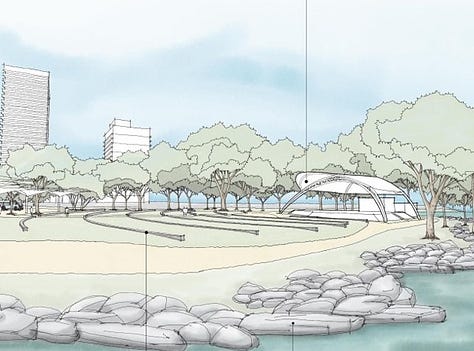
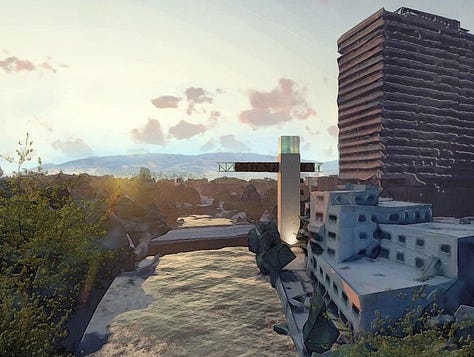
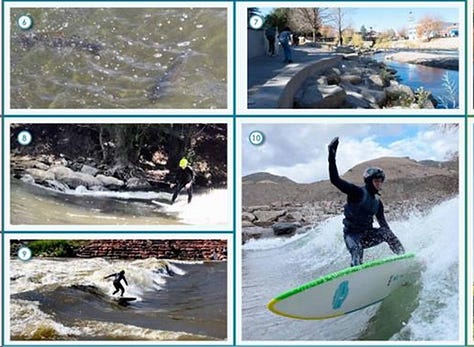
Please support your Washoe County Libraries
I had a wonderful time at the Local Author Fest at the Downtown Reno Library this past Saturday. Thanks so much to everyone who introduced yourselves, bought a book, and/or came to my reading. What a fantastic experience in one of Reno’s most stunning historic interiors. The staff executed an extremely complex event with enthusiasm, warmth, and consummate professionalism. They are phenomenal.
They are also very worried. As you have likely heard from This is Reno, KOLO-8, or elsewhere, Ballot Question WC-1, which would have retained the existing property tax set-aside funding for libraries that was established in 1994 and set to expire in June 2025, did not pass. That means the percentage of the property tax formerly appropriated directly to the libraries will still be collected, but will now be controlled by the Washoe County Commission as part of the county’s general fund.
As a professional author, educator, and lifelong reader, I know firsthand the importance of libraries to our civic well-being. If you’d like to join me in encouraging the Washoe County Commission to prioritize that funding for our beloved library system, you can advocate individually or sign a citizen-led petition here. Thank you!
Be sure to check out my Citizen Guide for helpful resources and links for anyone hoping to become more informed and engaged in issues related to urban development (& more) in Reno.
As always, you can view this and prior newsletters on my Substack site, subscribe to receive each new edition in your email inbox, and follow the Brief (and contribute to the ongoing conversation) on X, Facebook & Instagram. If you feel inspired to support my writing and research with a financial contribution, you can sign up for a paid subscription through my Substack site or contribute to my Venmo account at @Dr-Alicia-Barber or via check to Alicia Barber at P.O. Box 11955, Reno, NV 89510. Thanks so much for reading, and have a great week.

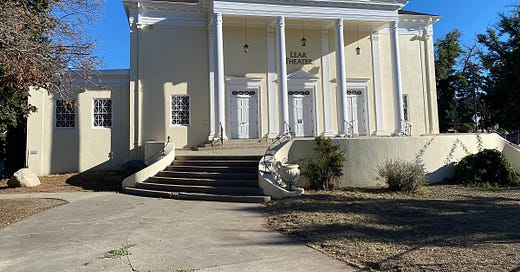


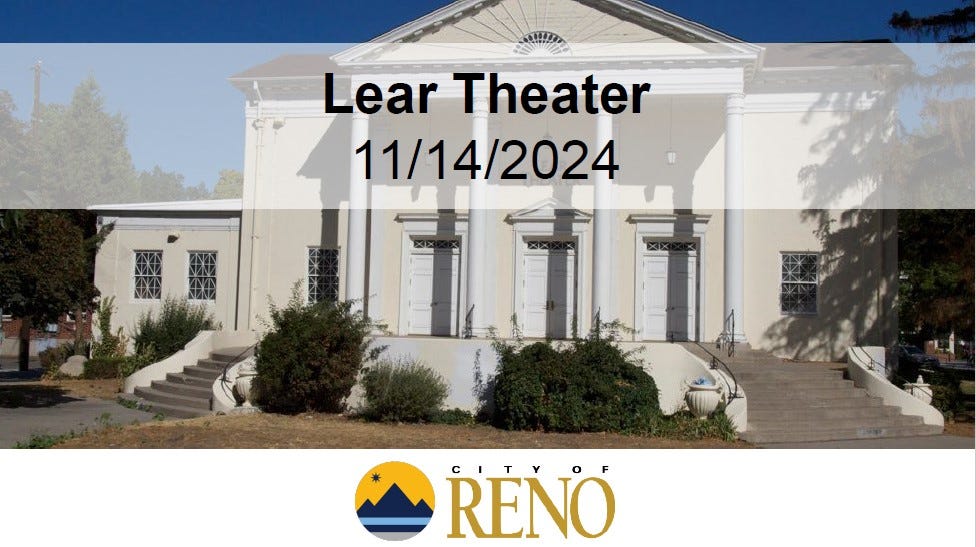
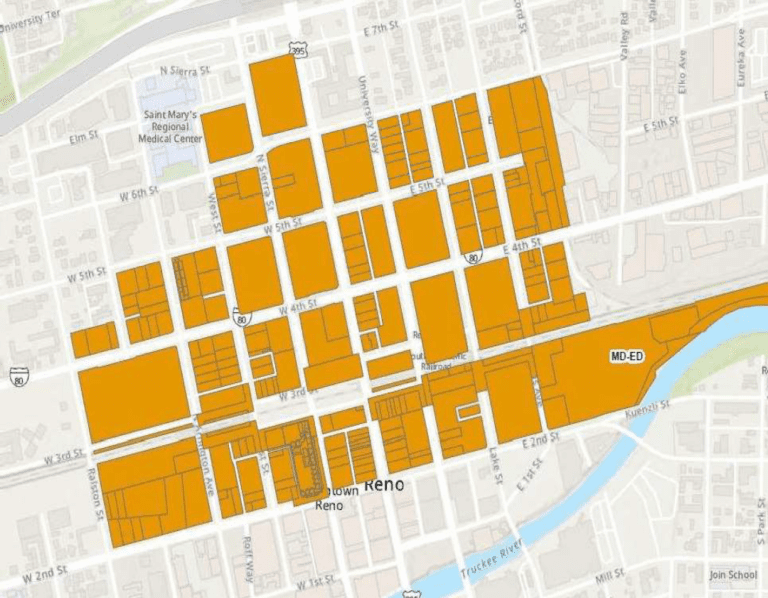
How big should a FOR LEASE sign be in a downtown vacant storefront? As big as a casinos?
Your very interesting reporting always reminds me of our civic obligations and aspirations. Thanks very much for that!
If you're interested in how architecture and every building can be much more sustainable and efficient in nearly every way, and how this new, highly practical way of designing and building is up to 55% faster, up to 41% less labor, 90% less fuel usage and costs, a ton less grief, non-combustible, anti-fungal, healthier, more comfortable, and yields higher quality at the same or even less costs, and how all of it was created right here in Reno, then please let me know.
Tim Sweeney, AIA, CPHD&T- https://simplus-systems.com